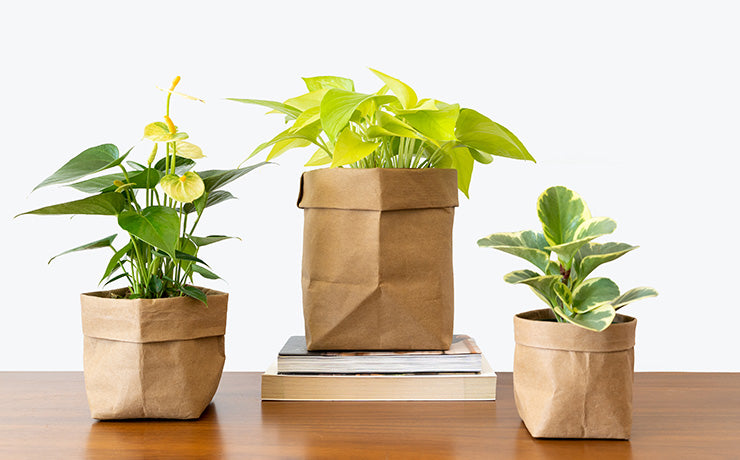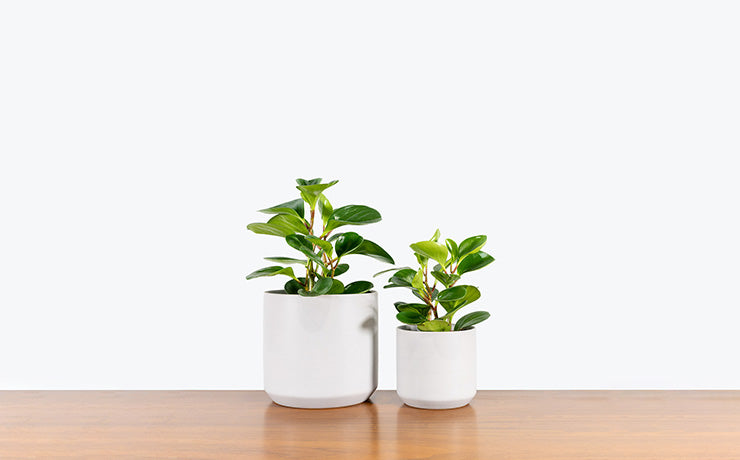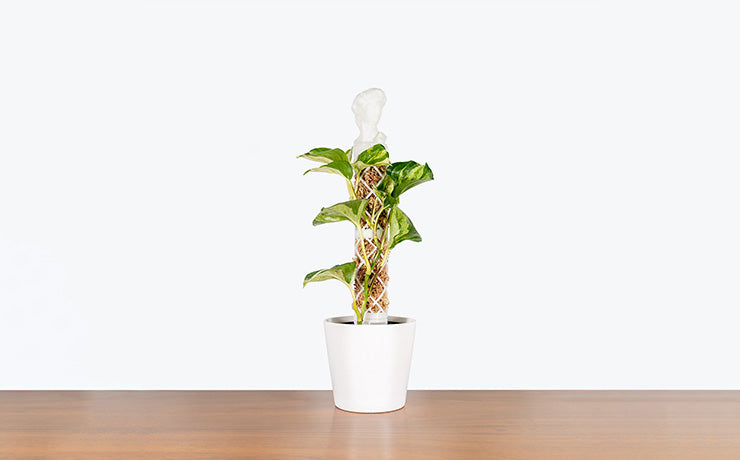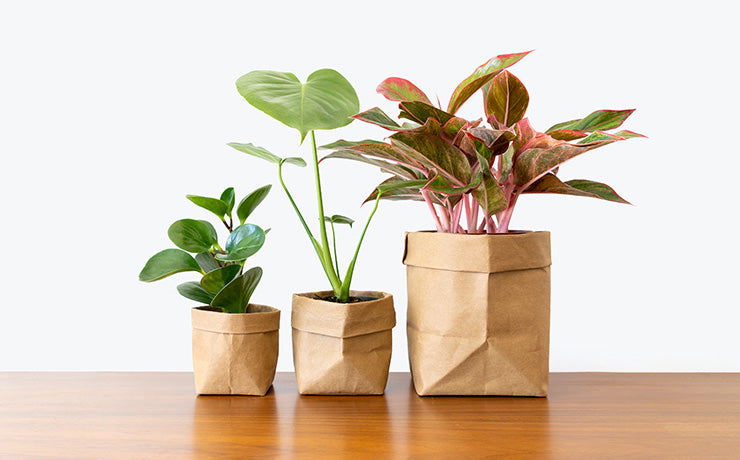Glossary
Plant Care Library
V
Variegated Shell Ginger
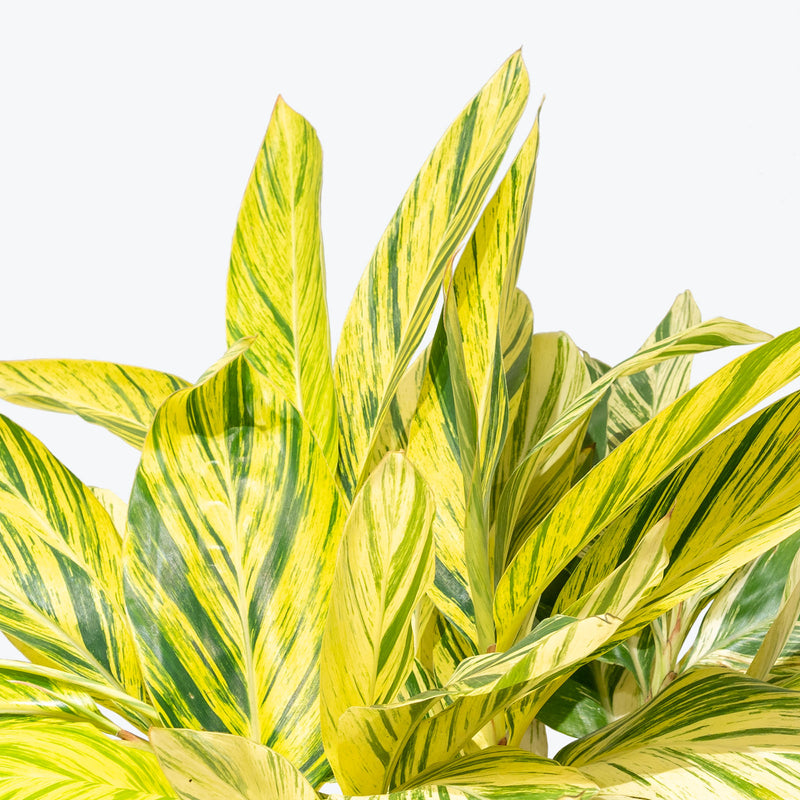
How to care for Variegated Shell Ginger
They enjoy some direct sun, but they'll also do well in bright, indirect light. It is best to place this plant somewhere where it will receive some nice morning sun, or a couple hours of afternoon sun, and then indirect light the rest of the day.
They will do best in bright light. A nice bright place inside your home would be on the window sill or a stool that is right next to a window, either with or without blinds, depending on if the plant can handle sun. Remember that plants will grow based on how much light they receive.
Allow the top quarter of soil to dry before watering again. This usually takes about 2 - 3 days in an average home environment. It may vary depending on the time of year, your environment and lighting conditions, but once you notice its leaves beginning to curl up slightly, it is time to water again.
They like a high humidity environment, give them a mist daily or as often as possible. Alternatively, you can put them around a humidifier. Although they won't die if they don't receive enough humidity, their leaves may have some dry, crunchy, or yellow edges.
Although this is just an ornamental ginger, it is non-toxic to both humans and pets! The variegation varies a lot in this variety of ginger, but keeping it in bright light will produce the ideal variegation.
You can feel comfortable having this plant around your home in the potential case where your pet feels like nibbling on it. However, we typically recommend keeping your pets from eating any of your houseplants..
View PlantVaughnara Fiftieth Anniversary Orchid

How to care for Vaughnara Fiftieth Anniversary Orchid
Vaughnara Fiftieth Anniversary Orchid enjoys some direct sun, but they'll also do well in bright, indirect light. It is best to place this plant somewhere where it will receive some nice morning sun, or a couple hours of afternoon sun, and then indirect light for the rest of the day.
Vaughnara Fiftieth Anniversary Orchid will do best in bright light. A nice bright place inside your home would be on the window sill or a stool that is right next to a window, either with or without blinds, depending on if the plant can handle sun. Remember that plants will grow based on how much light they receive.
Vaughnara Fiftieth Anniversary Orchid likes the soil to be relatively dry before the next watering. That usually takes about 1 week in an average home environment, as they are typically potted in a bark mix that allows for quick drainage and good air circulation. It will vary depending on the time of year, your environment and lighting conditions, but for them, it's always safer to underwater or water when you see signs of lack of water (i.e. droopy, floppy, or soft leaves). Expect to water more often in brighter light and less often in lower light.
Vaughnara Fiftieth Anniversary Orchid will do well in average humidity environments but will appreciate a little bit of humidity if provided, give them a mist daily or get a humidifier.
Provide good air circulation and well-draining orchid mix (bark-based). Feed Vaughnara Fiftieth Anniversary Orchid with a balanced orchid fertilizer monthly during the growing season. Repot every 2–3 years or when the medium breaks down. Blooming is more reliable with a slight drop in nighttime temperatures.
Vaughnara Fiftieth Anniversary Orchid is moderately toxic and can cause some adverse reactions when ingested, so it is best to not let your pets eat it, which we advise for all plants in general. The severity of the reaction will depend on how much of the plant is ingested but, if you know your pet typically does not eat your plants, this plant will be suitable for your home..
View PlantVenus Flytrap
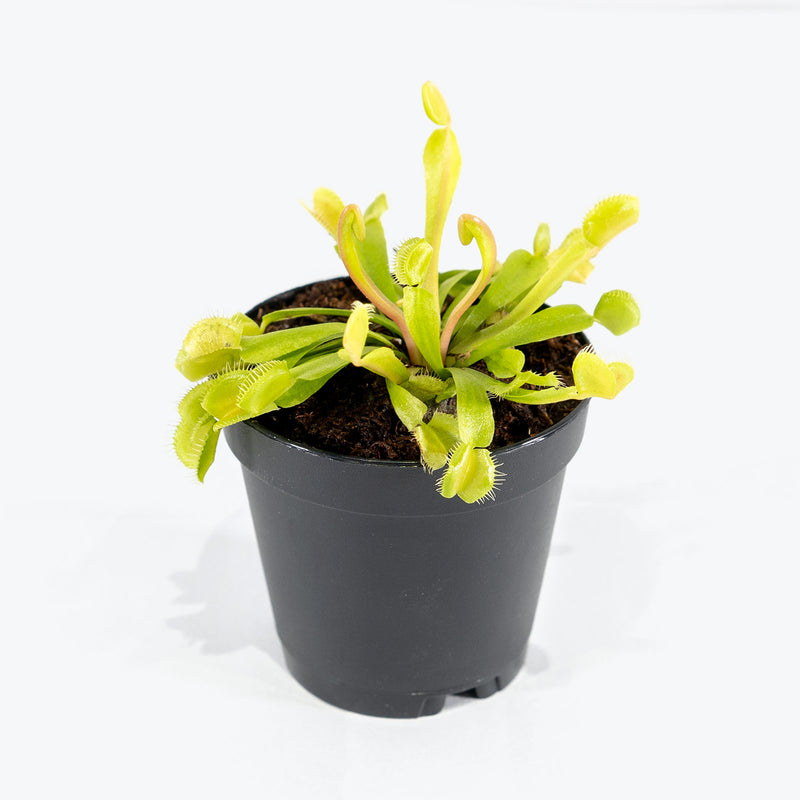
How to care for Venus Flytrap
Venus Flytrap should not be in a position to see the sun directly, although early morning or late evening sun is fine. Filtered sunlight through a sheer curtain is best and most homes are comprised primarily of indirect sunlight. The best spot for them is where they do not see the sun during the majority of the day but still get bright, indirect light.
Venus Flytrap will thrive in bright light, but also can tolerate medium light. A good medium-light place in your home would be in the middle of a room that has a regular size window. They can be placed anywhere between the middle of the room and the window. Remember that plants will grow based on how much light they receive.
Venus Flytrap likes the soil to stay consistently moist, but not soaking wet. Give them water whenever just the surface of the soil is starting to get dry. Expect to water more often in brighter light and less often in lower light.
Venus Flytrap likes a high humidity environment, give them a mist daily or as often as possible. Alternatively, you can put them around a humidifier. Although they won't die if they don't receive enough humidity, their leaves may have some dry, crunchy, or yellow edges.
Venus Flytrap's main diet is flies (or other small insects) but the trick is that the prey must be alive when caught. Dead flies won't work in Venus flytrap feeding; the insect must move around inside the trap to trigger it to close and digest it. It also needs to be small enough that the trap can close tightly around it to keep out bacteria. Like many other plants, Venus flytraps need a period of winter dormancy when they appear to be dead (the leaves may die back). Keep it somewhere warm and bright, and don't let the soil dry out completely. Using rainwater or distilled water would also be ideal.
You can feel comfortable having Venus Flytrap around your home in the potential case where your pet feels like nibbling on it. However, we typically recommend keeping your pets from eating any of your houseplants..
View PlantVenus Flytrap Terrarium

How to care for Venus Flytrap Terrarium
They should not be in a position to see the sun directly, although early morning or late evening sun is fine. Filtered sunlight through a sheer curtain is best and most homes are comprised primarily of indirect sunlight. The best spot for them is where they do not see the sun during the majority of the day but still get bright, indirect light.
They will thrive in bright light, but also can tolerate medium light. A good medium-light place in your home would be in the middle of a room that has a regular size window. They can be placed anywhere between the middle of the room and the window. Remember that plants will grow based on how much light they receive.
They like the soil to stay consistently moist, but not soaking wet. Give them water whenever just the surface of the soil is starting to get dry. Expect to water more often in brighter light and less often in lower light.
They like a high humidity environment, give them a mist daily or as often as possible. Alternatively, you can put them around a humidifier. Although they won't die if they don't receive enough humidity, their leaves may have some dry, crunchy, or yellow edges.
Their main diet is flies (or other small insects) but the trick is that the prey must be alive when caught. Dead flies won't work in Venus flytrap feeding; the insect must move around inside the trap to trigger it to close and digest it. It also needs to be small enough that the trap can close tightly around it to keep out bacteria. Like many other plants, Venus flytraps need a period of winter dormancy when they appear to be dead (the leaves may die back). Keep it somewhere warm and bright, and don't let the soil dry out completely. Using rainwater or distilled water would also be ideal.
You can feel comfortable having this plant around your home in the potential case where your pet feels like nibbling on it. However, we typically recommend keeping your pets from eating any of your houseplants..
View Plant